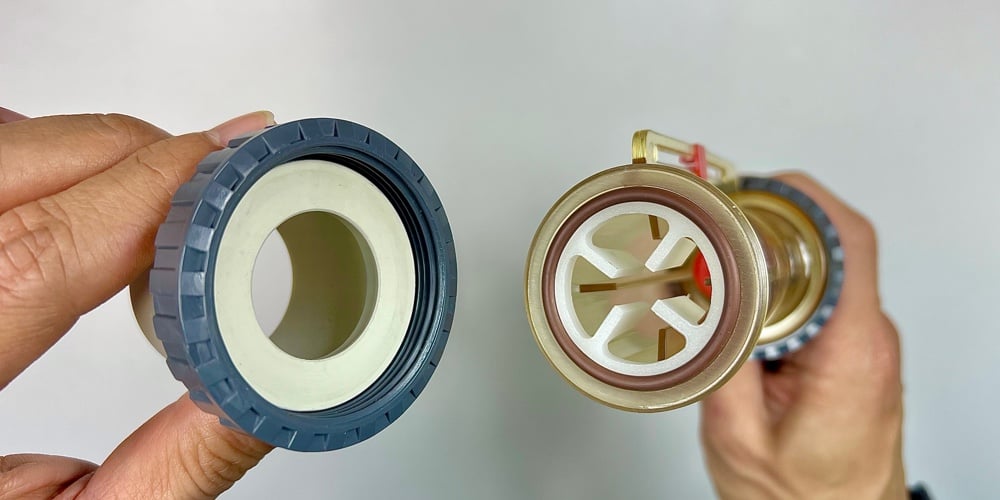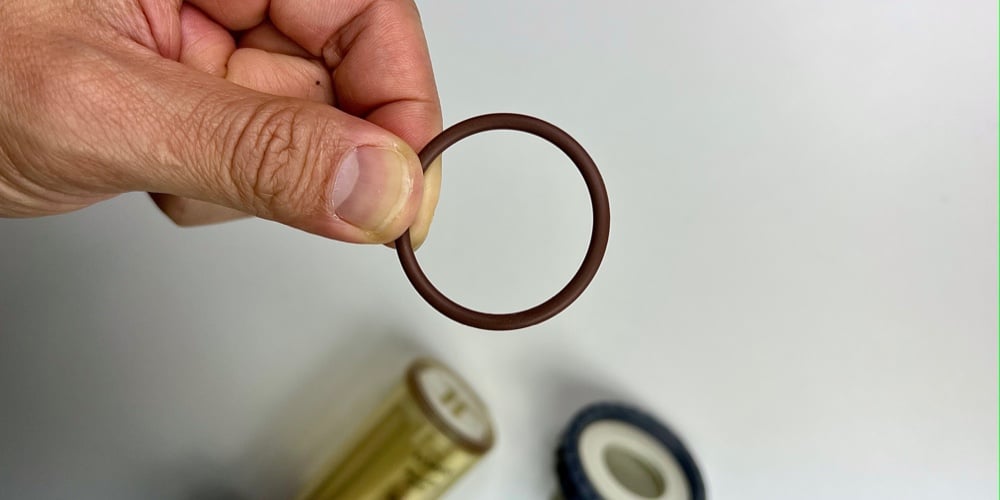ขั้นตอนแรกในการจัดการกับการรั่วของเครื่องวัดการไหล
สำหรับลูกค้าที่พบการรั่วของเครื่องวัดการไหล แนะนำให้ตรวจสอบและทำความสะอาดเศษสิ่งสกปรกที่บริเวณเชื่อมต่อก่อน หากยังคงมีการรั่วเกิดขึ้น การเปลี่ยนโอริงใหม่มักจะแก้ไขปัญหาได้ การรั่วมักเกิดขึ้นหลังการบำรุงรักษาหรือแก้ไขปัญหาในระหว่างการประกอบใหม่

การป้องกันการรั่วในเครื่องวัดการไหล
กุญแจสำคัญในการป้องกันการรั่วคือ
โอริง ซึ่งเป็นวิธีการซีลที่ง่าย ราคาไม่แพง และเชื่อถือได้ ติดตั้งง่าย และมาพร้อมกับเครื่องวัดการไหลประเภทต่าง ๆ โดยโอริงมีความสำคัญอย่างมากในการสร้างการซีลที่แน่นระหว่างการประกอบ

➜ สิ่งที่ควรพิจารณาก่อนการประกอบใหม่
การตรวจสอบสภาพของโอริงก่อนการประกอบเครื่องวัดการไหลใหม่สามารถป้องกันการรั่วที่อาจเกิดขึ้นได้ โดยเน้นถึงความสำคัญของการเลือกวัสดุที่เหมาะสมกับสภาพแวดล้อมการใช้งาน
สาเหตุของการรั่วในเครื่องวัดการไหล
เมื่อใช้งานไปนาน ๆ โอริงอาจสูญเสียความสามารถในการซีลเนื่องจากการสึกหรอ การเปลี่ยนรูปร่าง หรือการกัดกร่อนทางเคมี โดยเฉพาะในระหว่างการประกอบใหม่ ซึ่งอาจทำให้ยากต่อการจัดวางโอริงกลับเข้าไปในร่องอย่างถูกต้อง และนำไปสู่การรั่ว
การยืดอายุการใช้งานของเครื่องวัดการไหล: การเลือกวัสดุโอริงที่เหมาะสม
การเลือกโอริงควรพิจารณาจากความเข้ากันได้ทางเคมี อุณหภูมิ แรงดันการซีล ความต้องการในการหล่อลื่น ความแข็ง ขนาด และต้นทุน วัสดุต่าง ๆ เช่น FEPM, EPDM, NBR, VITON และ VITON-F มีให้เลือกหลากหลาย วัสดุที่เหมาะสมช่วยให้การซีลมีประสิทธิภาพ ความทนทาน และอายุการใช้งานยาวนาน แม้ในสภาพแวดล้อมที่รุนแรง